One of the most difficult things we encounter while traveling are border crossings and fees. They cause so much confusion and stress because the rules aren’t always clear and you’re at the mercy of someone who might be having a bad day. Not to mention everything is usually in another language!
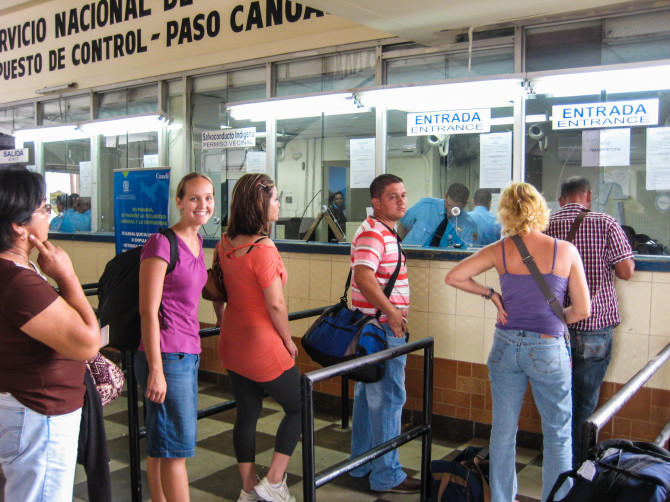
The problem is that once you think you have figured out the rules of the game, they change them! Some border agents are friendly and won’t ask you for anything but your passport while others will require every document possible, hoping to catch you off-guard. They use their mighty power to make you subservient to them, and in doing so sometimes create political tensions between the governments of entire countries.
Here is a list of the border crossings we have been through, and the things you need to know about each one before you get there. Most notes apply to all nationalities of travelers, but some apply only to Americans.
First, a Few Things About Border Crossings:
- If the country allows, ask for a 90 day (3 month) visa when they ask you how long you’ll be staying. If you tell them 2 weeks and they put 14 days down you have no flexibility to change your plans or if you get sick. Some countries don’t charge extra for 90 days, so give it a try.
- Only pay border crossing fees to an authorized border agent. It is often confusing where to go or who to give papers or money to. Don’t let your taxi driver convince you to pay him any border fees.
- Answer their questions briefly. Sometimes telling all you know can make things more complicated. Don’t go on about everywhere you’ve been or your plans for the next 3 countries you plan on visiting. They may ask you for more paperwork if they think you’re up to something.
Central America – Border Crossings and Fees
Costa Rica – Nicaragua • November 2013
Update September 2014 – We were charged an $8 road tax, and a $14 border fee by Costa Rica.
Update April 2014 – We heard that Costa Rica is charging a higher exit and entry tax as a “road use tax”, so be prepared for at least another $15 in fees in addition to the $14 listed below.
[Bus] Nicaragua is officially requiring onward travel tickets when you enter the country, but they often don’t ask for them. There is a $14 fee per person to enter Nicaragua from Costa Rica. The border crossing was pretty straight forward when we took a bus across. The one uncomfortable thing is on TicaBus (and others) they collect everyone’s passports in a bag and return them to you when it’s time to board the bus again. There is a long wait because you put your bag on a table so the border agent can check it. If you are last in line with a small bag they might just skip you which is what happened to us :)
The bus gets sprayed with a pesticide chemical so make sure you take out all your stuff (especially food) before getting off the bus – which you should always do anyways! The driver’s helper calls your name from your passport and you get on. Double check you got the entry stamp!
Click here for a Detailed Guide on the Costa Rica – Nicaragua Border
Costa Rica – Panama • November 2013
[Bus] Panama is making things a little bit more complicated, but it’s still fairly easy to cross the border from Costa Rica. It’s not laid out well at all so it’s a bit confusing. Usually the bus driver will tell you where to go, but you have to walk about 1,000 feet from one country’s border office to the other. It really feels like you’re lost, but just keep walking straight. Keep you eye on someone else from your bus group.
To cross into Panama you need proof of a flight back to your home country (no exceptions). You also need to show proof of $500, either in cash or a recent printed bank statement. Rumors are credit cards aren’t acceptable (though they were before). If you don’t have the cash they’ll point you to the nearest ATM and everyone will watch you walk over and pull out a wad of cash – try to avoid this… Official rules in Spanish are posted below – it looks like this has been law since 2008, but they’re just now in the mood to enforce it for everyone. Click to read it full-size.
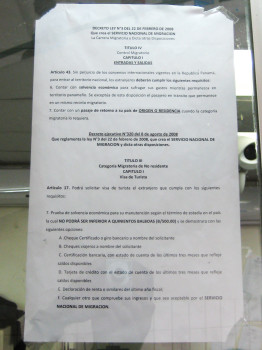
Official rules detailing requirements for people to have a return ticket to their home country and proof of $500 for crossing the border into Panama.
South America – Border Crossings and Fees
Costa Rica – Chile • December 2013
Update March 2014 – We heard a few other tourists say that the reciprocity fee had been eliminated. This is great news! I haven’t found an official website to validate this, but hopefully it stays.
[Flight] At the airport, Americans must pay a $160 reciprocity fee to enter the country. Five-ish other countries have to pay a much smaller fee. If you enter the country by bus, there is no fee. There are no special visa forms to fill out beforehand, just fill out the papers they have when you get there. You can pay with a credit card :)
Chile – Argentina • January 2014
[Bus] To cross into Argentina, even if just passing through on a bus, Americans must pre-pay a reciprocity $160 fee online at www.VisaToArgentina.com before entering the country. Australians and Canadians must also pay an entry fee. You can NOT pay at the border – they will turn you around to go back to the nearest town to pay.
If booking a bus ticket, they will usually ask you if you’ve paid the “tasa,” or fee. Some bus lines say it’s okay not to have it if you’re on a bus from mid-Chile down to the southern tip of Chile, but I asked the border agent and he ensured me that everyone crossing the border needed it. Make two copies to carry with you in case you lose one. It has a barcode they scan at the border so you can keep it with your passport information.
These border crossings are a breeze, no worries! BUT… Always keep every paper they give you until you leave the country. Some receipt-sized non-important looking papers are your ticket to leave the country, keep them close by!
Argentina – Uruguay • January 2014
[Ferry] The most popular way to cross from Argentina to Uruguay from Buenos Aires is to Colonia by ferry. This is popular with tourists who just go for a day trip to get US dollars. There is no fee to visit Uruguay and is easy to cross. No visa needed.
Crossing back from Uruguay to Argentina is the same as described for Chile-Argentina.
Argentina – Bolivia • February 2014
[Bus] In order to enter Bolivia, Americans must pay a $135 reciprocity fee per person in US Dollars. They will not accept pesos or bolivianos. Make sure to hang on to some of your dollars for this purpose because finding dollars in Argentina is really expensive! You will also need to fill out a Visa form and have a passport photo with you so they can attach it to their papers. The border guys were mostly interested in getting the money but they also took our forms and kept them in a big new Manila folder to store.
If you don’t have US dollars, no problem. You can pass right by the immigration office and get USD from any ATM on the Bolivian side. We didn’t believe this and had to buy a few dollars on the Argentina side, but it’s legit! I asked the border officials and they said you can cross the border for one day and not have to do anything at the Bolivian customs office. I’m not exactly sure how they know what day you entered, but it’s really helpful for grabbing some US dollars for the border fee!
Also, there are lots of legit money changing places right at the border so be sure to lose all those devaluing Argentina pesos right there! The bus station is 8-ish blocks from the border (we took a taxi). Right around the block is a bank with an ATM so you can get cash (either Bolivianos or $100 USD bills).
The rules for crossing from Bolivia to Argentina should be the same as described for Chile-Argentina.
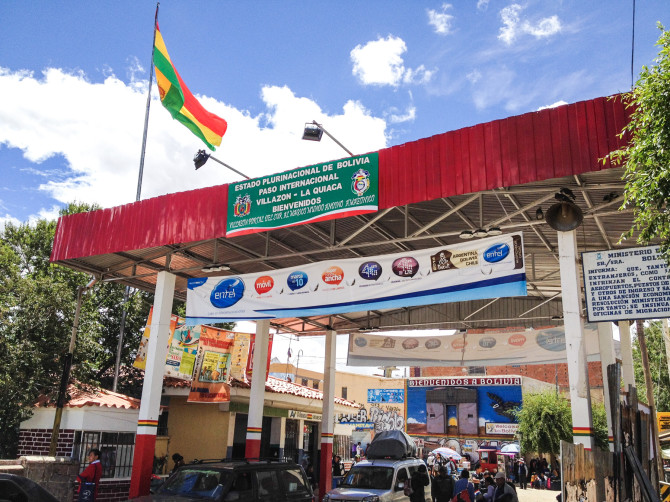
North America – Border Crossings and Fees
USA – Costa Rica • May 2014
[Flight] To fly from the US to Costa Rica, you have to show a proof on onward travel at the airport. The Costa Rican rules for onward travel only mean that you must show a ticket to leave Costa Rica.
Sometimes they try to force you to buy a return airplane ticket, but that’s not the law, so don’t give in to them. We had purchased a bus ticket from Costa Rica to Nicaragua through an online re-seller called A Safe Passage but the check-in person in the US said that Nicaragua also wanted proof of onward travel! That wasn’t true – they were bluffing us because they wanted us to buy a really expensive ticket from them. We were pretty adamant that we knew the rules and they eventually let us through with our bus ticket. So, just be firm and nice and they’ll let you pass.
Another option they give you is to purchase a really expensive “refundable ticket” right there and refund it after your flight. We haven’t done this but have heard it works out ok.
There are no fees for Americans to enter into Costa Rica, but they do charge a $28 airport tax to leave from the San Jose airport, payable in USD or Colones.
Costa Rica – USA • April 2014
[Flight] It is relative easy for Americans to return to the US unless you are missing papers or something’s wrong with your passport. I know there are many rules for citizens of other countries to cross the US border, so check before you leave. Some European travelers have told us that they needed a special visa when their flight had a layover in the US, even though they weren’t leaving the airport.
USA – Mexico • 2013
[Car] You can drive from the US into Mexico without hardly knowing you crossed a border. Sometimes they’ll pull you over to make sure you don’t have any drugs or guns on-board.
There are no fees for Americans to cross into Mexico.
Mexico – USA • 2013
[Car] The border wait to cross the border from Mexico into the United States in a car can be up to 6 hours or more! Here are some details for the western border crossings in California, near San Diego:
- Tijuana border crossing (20+ normal lanes and also super-fast SENTRY lanes) – 6 hours or more.
- Otay border crossing (6 medium-fast lanes for passport card-holders, 4 slow lanes for all others, and also super-fast SENTRY lanes) – 4-6 hours.
- Tecate – a smaller border crossing (4 normal lanes) but often it is jam-packed too. Depending on the time and day of the week it can be a breeze but it’s usually hit or miss.
There are no fees for Americans to return to the US. Leaving the country is just a looong line. Usually you just drive to a little booth and the border agent will just ask for your passport and ask a few questions why you were in Mexico. They might take a look in your trunk. No stamp in the passport, they just scan it.
The red camera-looking machines in the line are for passport cards that contain an RFID chip. If you have the card you can get into the medium-fast lane. The SENTRY lanes require a background check and are expensive, but well worth it if you cross at least once a month.
Please leave a comment if you have more updated information about any of these border crossings and fees they charge! Thanks!
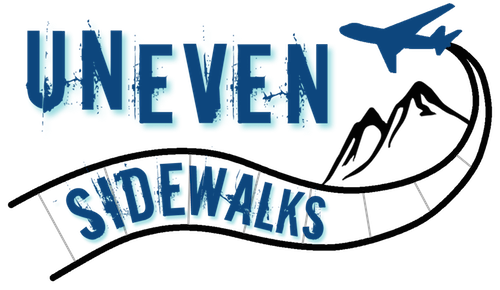



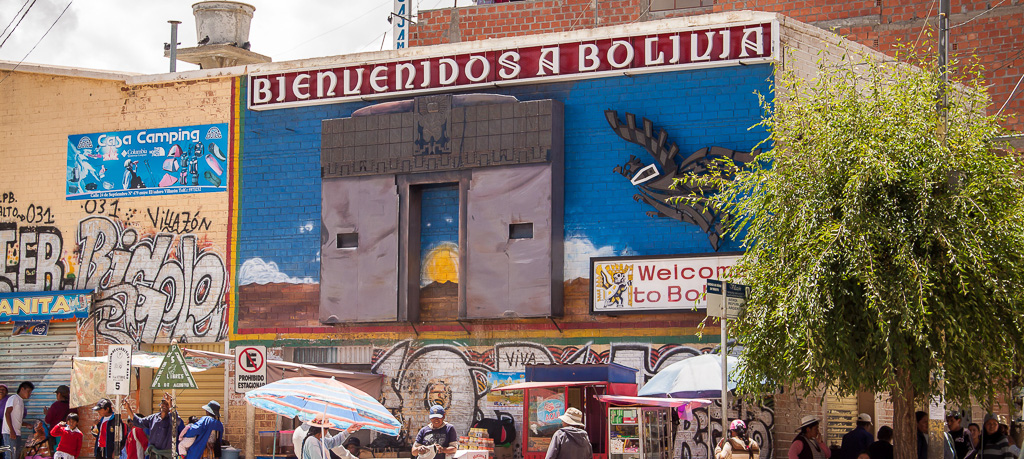
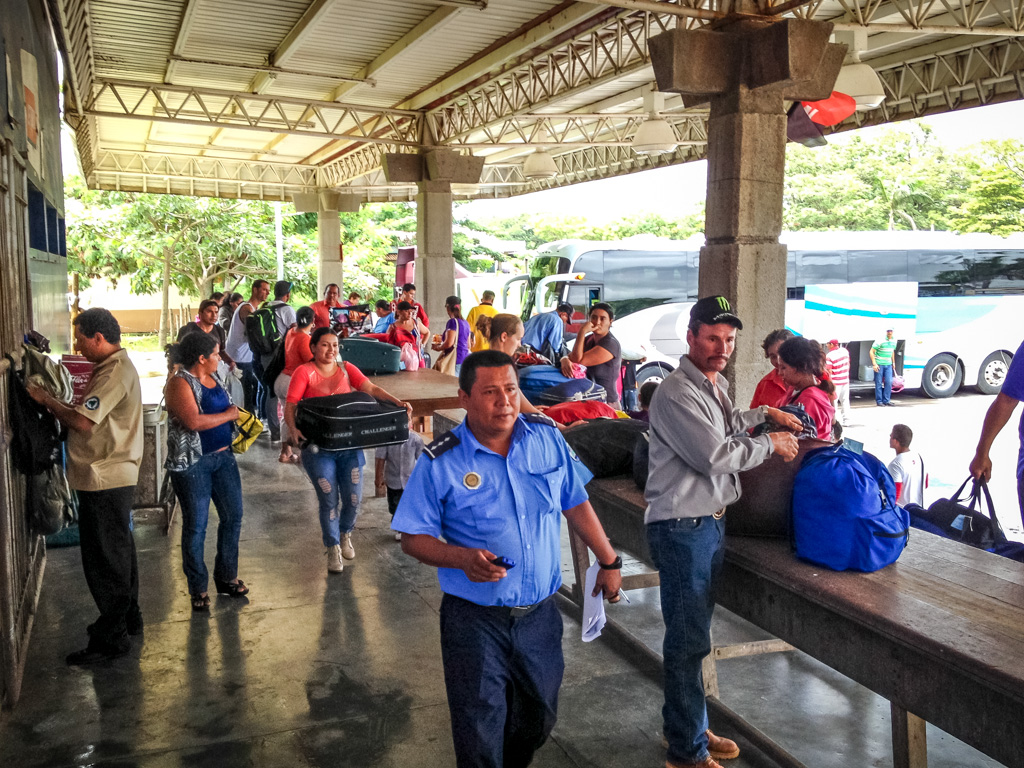
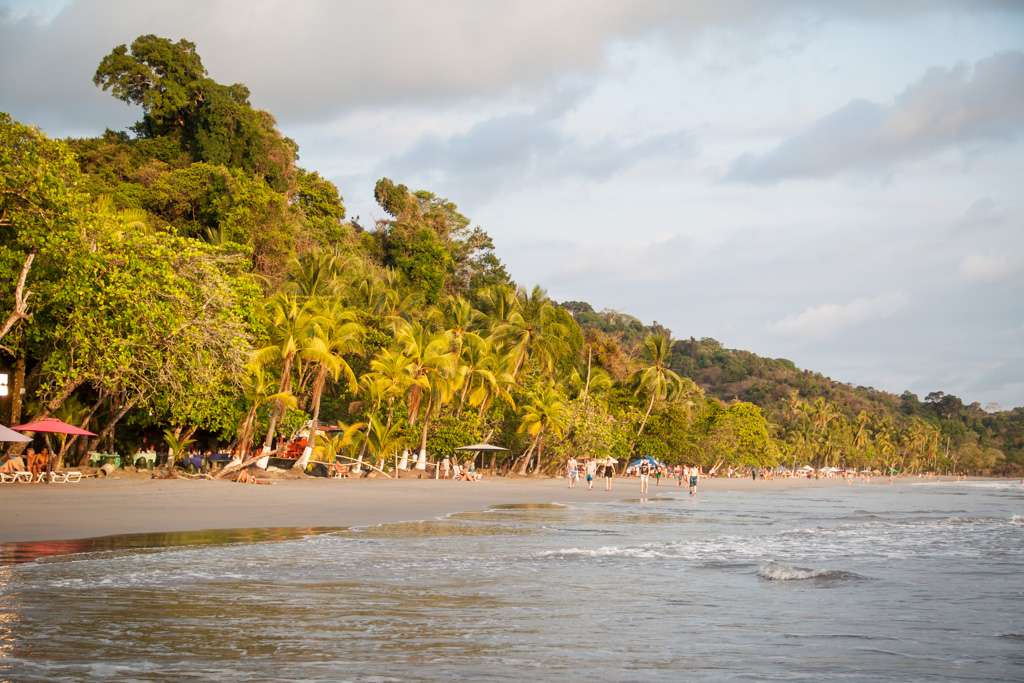
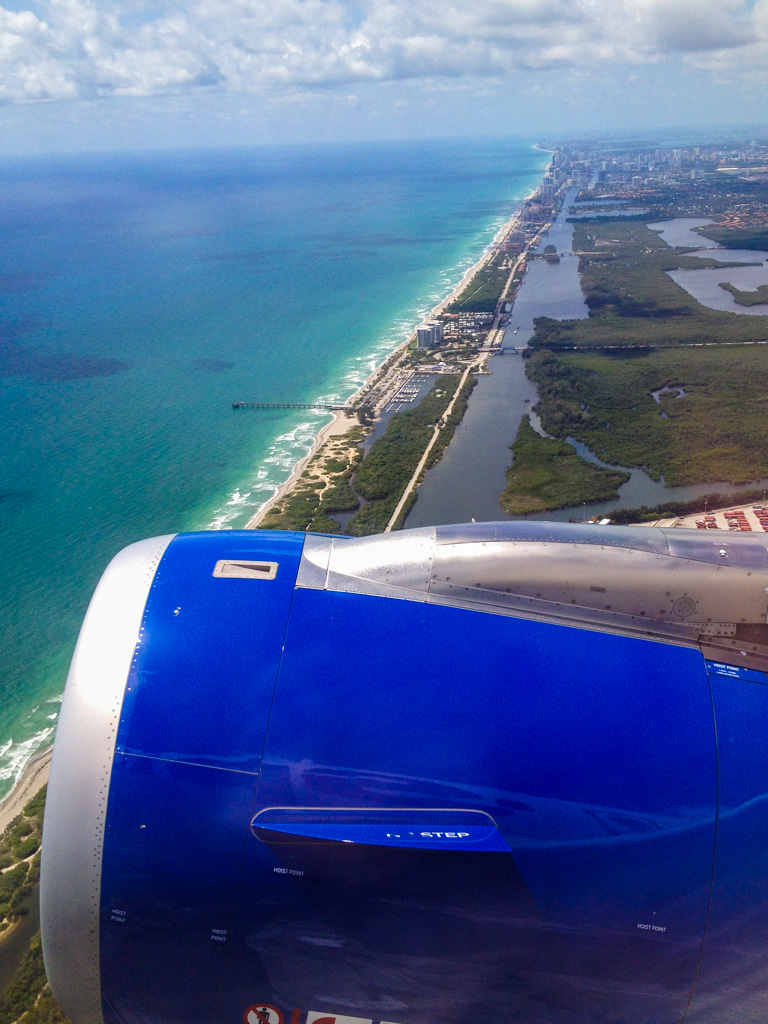
Pingback: Frank Vessel
Pingback: Planning: Growing Pains and Banking Arrangements | Her Odyssey